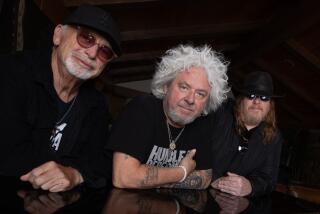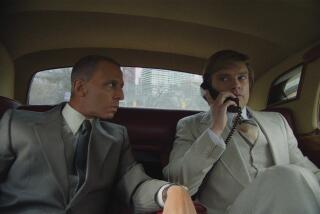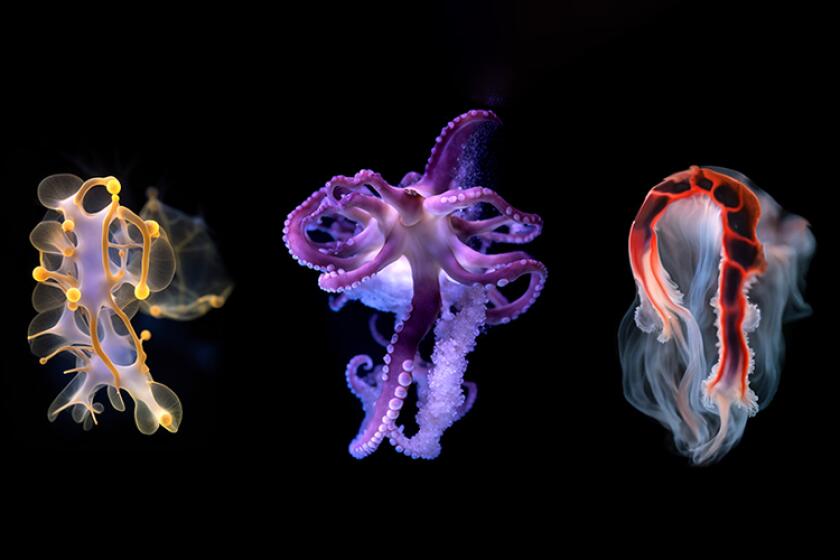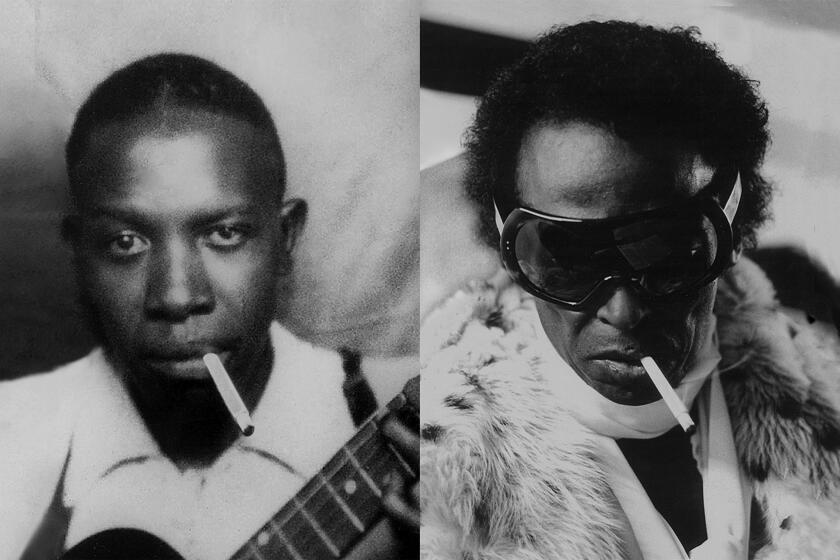Dietrich Mystique Illuminates ‘Venus’
Josef von Sternberg knew how to make a spectacle of Marlene Dietrich. A director obsessed with the sexual power of his star, he glorified Dietrich’s womanhood, then yanked her off the pedestal by exploiting every primal impulse she had.
“The Blue Angel” (1930) is where Dietrich first became an erotic symbol through Von Sternberg’s camera, but “Blonde Venus” (1932) really shows off his contradictory vision. Although “The Blue Angel” is the finer movie, “Blonde Venus” (which screens Friday night as part of the Newport Harbor Art Museum’s Dietrich retrospective) saw Von Sternberg going beyond the mystery of Dietrich to establish the mystique.
“Venus,” which really isn’t especially good (the plot has long turgid stretches, and much of the acting is stiff and vague), opens with a scene of Dietrich swimming in a Bavarian lake. Despite the hint of nudity, the scene is arty, almost virginal, with its gloss and shadows. Her character, Helen, meets future husband Edward (Herbert Marshall), who just happens to be traipsing by.
Once married, we see how domestic and good Helen can be. She’s a glistening symbol of domesticity--perfect mother to little Johnny (Dickie Moore) and doting wife to Edward. But when the story takes a weird turn, and Edward needs money for a life-saving medical treatment in Europe, Helen sheds her propriety and becomes something else entirely.
Von Sternberg puts the quiet butterfly back in the cocoon, letting a shadowy moth emerge. Helen takes a job in a downtown dive, and we literally watch her reinvent herself. It’s the picture’s best scene, one of the most famous of the Dietrich moments.
Now, billed as the Blonde Venus, the revue’s centerpiece, Helen is dragged on a smoky stage by a wiggling mass of chorus girls done up as bongo-crazed African natives. Wearing an ape suit, she winds through the crowd, a beast on parade. Then, off come the monkey’s paws to reveal Dietrich’s lovely hands--it may be the strangest striptease on film.
The passage climaxes with Dietrich, wearing a huge white Afro with lightning bolts running through it, singing “Hot Voodoo.” The tune is pure speak-easy blather, but raw and peppy. It features lines such as “my conscience wants to take a vacation . . . I want to be bad.”
Von Sternberg has started his heroine on the downward spiral, and the descent is pretty sharp. Helen takes up with millionaire slickster Nick (Cary Grant), goes on the lam with Johnny, becomes a hooker and loses everything in less than 80 minutes as Von Sternberg nimbly sidesteps the Hays morality code with more than a little innuendo.
Of course, Von Sternberg does succumb to an uplifting Hollywood ending. There’s no surprise (maybe disappointment, though) when Helen finds the right path again, and Dietrich, the newest, brightest celebrity on the scene at the time, is resurrected as an image palatable enough for even the most suspicious movie fan to embrace.
Dietrich would go on to many great roles, most without Von Sternberg’s imprint, but “Blonde Venus” did much to sensitize the public to what she was all about. Anyone who saw her later, maybe in less flamboyant, provocative ways, still couldn’t forget what was at the heart of her matter.
* What: “Blonde Venus.”
* When: Friday, July 30, at 6:30 p.m.
* Where: Newport Harbor Art Museum, 850 San Clemente Drive, Newport Beach.
* Whereabouts: Take Pacific Coast Highway to Jamboree Road and head north to Santa Barbara Drive, then east to San Clemente Drive.
* Wherewithal: $3 and $5.
* Where to call: (714) 759-1122.
More to Read
The biggest entertainment stories
Get our big stories about Hollywood, film, television, music, arts, culture and more right in your inbox as soon as they publish.
You may occasionally receive promotional content from the Los Angeles Times.






